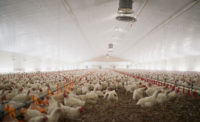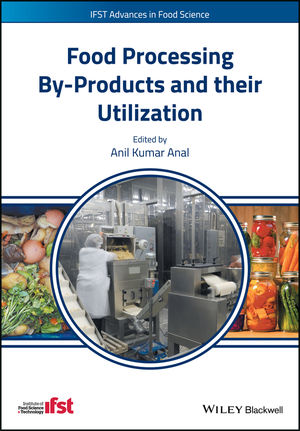Cheaper by The Bird
by David Gustovich
Automation can help poultry processors reduce internal supply chain costs.
Not too many years ago, the poultry industry experienced a significant growth spurt. Poultry products increased in popularity as a smart way to eat healthier.
Demand grew with the advent of every new fast-food restaurant featuring chicken. And poultry became a staple in a growing variety of prepared, ready-to-eat meals. Taking advantage of these trends, the poultry industry added capacity and invested millions of dollars in value-added processes. But that rosy picture faded as the red-meat sector battled its way back onto America’s plates, creating excess poultry industry capacity and heightened pricing pressure.
In response to changing market conditions, there has been a growing trend toward consolidation within the poultry industry. This has been evidenced by ConAgra’s acquisition of Seaboard Poultry a few years ago; the subsequent sale of ConAgra’s poultry division (including Seaboard) to Pilgrims Pride; and Foster Farms’ acquisition of Zacky Farms.
Today, with products increasingly perceived as commodities, pressure on margins has never been more intense, forcing many poultry companies to look deeper into their internal, extended supply chains to squeeze out as much cost as possible.
Only by improving their supply chain’s conversion costs on a per-bird or per-pound basis can companies — both private and public — hope to achieve margins that will net them an adequate return on investment.
The challenge: Optimize inside
The overwhelming challenge for many companies in getting their costs down is the sheer size of their supply chain, which extends from breeder farms, hatcheries, and grow-out houses to facilities that process more than 20,000 turkeys or 300,000 chickens a day.
At the facility level, the tools for balancing available meat block components against the mix dictated by customer requirements are often inadequate. As a result, a facility can be either “long” or “short” on critical components.
In addition, daily decisions to buy, sell, or freeze breast meat can have significant cost and margin implications. Add to these meat block issues such other factors as multiple bird types and sizes, seasonality, and hundreds of UPC’s within a facility and it is clear how very complex it can be to manage and control the entire system.
The pressure is enormous on planners, schedulers, and production supervisors to manipulate information and materials, both raw and in process, to keep lines running efficiently and the customer happy.
One large poultry company recognized this escalating pressure and the need to better manage its supply chain and control costs in a more effective manner. Dissatisfied with the solutions available in the marketplace and acknowledging the necessity for more robust methodologies, this company looked for an automated business solution designed specifically for the poultry industry.
One such solution is available from USC Consulting Group (USCCG), an independent consulting firm specializing in organizational effectiveness.
Based on a number of issues prevalent in the industry, USC developed a product to address the entire process and balance the many variablesassociated with the supply, demand, and component mix of live operations through the conversion process facility’s operations.
Hurdling the barriers
The road to developing a complete supply-chain solution was riddled with potholes, among them:
Basic information required for any planning system, including routings, formulas, capacities, run rates, batch sizes, and direct and indirect labor content, was not readily available through a single source, if at all.
Significant time and effort was required to develop the bill of resources (BOR) for each of the company’s 250 UPCs. (The BOR defines all the critical processing information related to methods, materials, machines, and manpower necessary to convert raw material into finished products.)
Work centers had no equipment tables for identifying capacities, run rates, and other important information.
Basic information required for any planning system, including routings, formulas, capacities, run rates, batch sizes, and direct and indirect labor content, was not readily available through a single source, if at all.
Significant time and effort was required to develop the bill of resources (BOR) for each of the company’s 250 UPCs. (The BOR defines all the critical processing information related to methods, materials, machines, and manpower necessary to convert raw material into finished products.)
Work centers had no equipment tables for identifying capacities, run rates, and other important information.
USCCG helped the processor take several critical steps to capture and integrate the vast amount of processing knowledge resident within their employee ranks.
Materials and operations team members were interviewed for detailed information on the sorting and sequencing logic planners supervisors had used for years for running the floor.
The management team supplied the customer service rules that delicately balance supply and demand, and established the rules governing customer service, lead times, and inventory positions.
Live-side planners created profiles for all the ranches and farms that serviced their facilities and the bird life cycle guidelines for weight, mortality, movement, and so on.
USCCG used all of this input to develop the essential components for this client’s automated business solution system, including two modules directly applicable to the poultry industry: Live Production Planning (LPP) and Time-Phased Scheduling (TPS).
The LPP module was designed to help poultry producers balance demands from and between live operations and process facilities. It is a planning and scheduling tool that provides such information as projected birds-available-for-processing, supply-and-demand analyses (also known as “position reports”) for eggs, poults and chicks, and mature birds.
These interactive supply-and-demand analyses show both excesses and shortfalls within the projected raw material and meat block, which lead to the most important benefit of using these solutions: the ability to see the impact of decisions flow through the entire process. This allows management to see, quickly and easily, the impact that a specific decision may have on any part or several parts of the supply chain.
The associated Time-Phased Scheduling tool gives companies the opportunity to optimize their asset base, including facility, equipment, labor and materials, in the most effective way possible. It also identifies all available surpluses or shortages by meat block component once customer-demand-driven meat requirements have been identified. It is an advanced planning tool that considers all resources when calculating operation start and end times, creating material movement schedules, coordinating support resources, and determining labor requirements, particularly within a demanding further processing environment.
The benefits
The poultry processor began to see the power and value of these new tools during the testing phase for these solutions.
Using the Live Production Planner (LPP), the live side production planning team recognized that field supervisors and department accountants could enter information directly into the database, reducing the time required for weekly inventory maintenance from 40 hours to five, an 88 percent improvement. New supply-and-demand screens for eggs, poults and chicks, and mature birds provided quick inventory snapshots, a functionality not previously available, for better-informed decision making. It was now possible to model future inventories and requirements to satisfy a variety of sales projections. Planning for farm capacity requirements, by season, was also significantly easier.
The further processing planning team also began to recognize capabilities provided by the Time-Phased Schedule (TPS) that were not previously available. Capacity constraints within certain operations, depending on mix, were now automatically accommodated through the schedule logic and the planner presented with action messages for only those “exception items,” which could not complete on time without planner intervention.
The planning rules allowed critical batch work centers to be filled with work-in-process before running to maximize pounds-per-cycle utilization.
Net requirement screens highlighted shortages to allow planners to make accurate, cost-effective material substitutions. They also showed excess materials that could be used to satisfy future demand without need of freezing.
Production supervisors realized that the time spent sequencing the work allowed them to focus on executing the schedule, instead of deciding what to run next or expediting materials.
Product flow and order velocity could be increased by reducing the quantity and time items spent as work-in-process, while product previously lost to shelf life depletion was reduced by scheduling and making only what was required.
Both planning groups were pleased that the majority of the planners’ time was now spent analyzing information to make good decisions versus making sometimes hasty decisions based on labor- and time-intensive numbers crunching.
Looking ahead
The decision-making process in the turkey and chicken industries runs 18 to 24 months. Right now decisions are being made in terms of how many birds to place and what bird profiles will be required up to two years out. Imagine how much time and labor would be expended if someone would sit down and work out the impacts of every single decision using an Excel spreadsheet.
What this system does, with the algorithms and logic built into it, is synchronize all the activities required to support a company’s ability to meet demand and optimize efficiency — thus saving money — at every stage of the supply chain. NP
David Gustovich is an executive vice president with USC Consulting Group (USCCG). USCCG is an independent consulting firm with offices in Chicago, Toronto, and Tampa. The firm specializes in operational effectiveness and has worked with 10 of the nation’s top 20 poultry producers and nearly 45 percent of North America’s top food companies.
For more details about USCCG, visit www.usccg.com.
For more details about USCCG, visit www.usccg.com.
Automated Business Solutions
Supply chain management
– Sales and Operations Planning (S&OP): High-level planning tool intended to assist top management with strategic planning while allowing sales, marketing and operations to work from a single plan.
– Inventory Analysis (IA): Presents inventory detailed at the line-item level and rolls up at the family-level as dollar opportunities so the right inventory in the right quantity can be procured and managed.
Finite Planning
– Capacity Resource Planning (CRP): Planning tool that provides a realistic view of available versus required resources and materials at the item and product family level. This is included with every TPS implementation.
– Live Production Planning (LPP): A planning tool used in the poultry industry to manage breeder flocks, hatcheries, grow-out ranches, live bird inventories and birds available for processing.
Finite Scheduling
– Time-Phased Scheduling (TPS): A finite capacity planning tool that considers resources when calculating operation start and end times, creating material move schedules, calculating material requirements, coordinating schedules and determining labor requirements.
Shop Floor Control
– Shop Floor Control (SFC): Includes the process monitor, which collects and displays actual production information as it becomes available.
Shop Floor Reporting
– Shop Floor Reporting (SFR): Summarizes and presents data at various levels of detail for management review and/or supervisory use.
The Data Analysis tool turns data into information by summarizing and presenting the data you want in the format you prefer.
The Opportunity Manager provides a means for employees to raise and resolve production issues.
The Report Manager is a set of operational reports and graphics that assist both management and operations at the appropriate level and time.
The Opportunity Manager provides a means for employees to raise and resolve production issues.
The Report Manager is a set of operational reports and graphics that assist both management and operations at the appropriate level and time.




